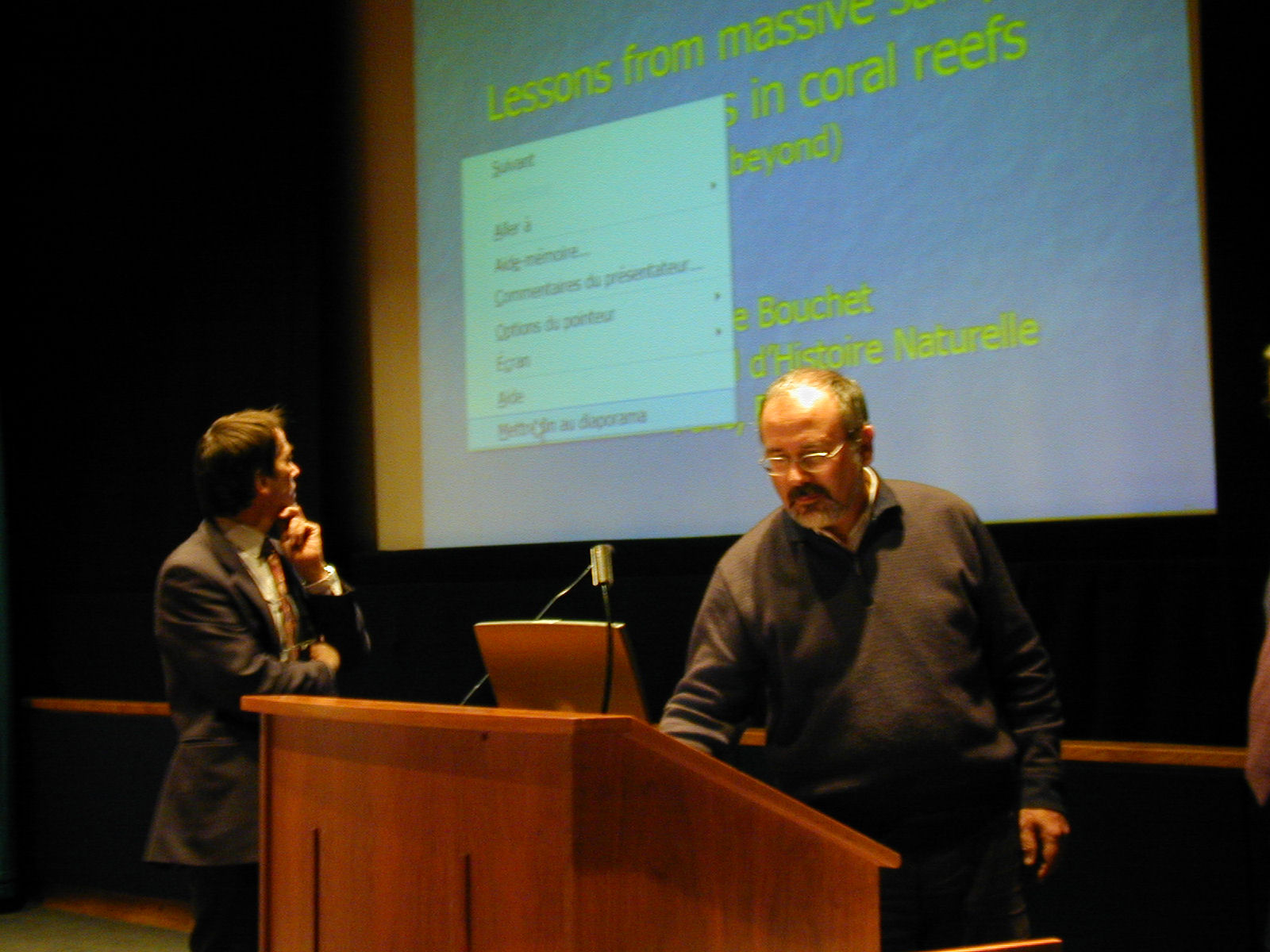

| At a SPECIAL LECTURE organised for The Malacological
Society of London and the Zoology Department, Natural History Museum, Professor Philippe Bouchet of the Muséum National d’Histoire Naturelle, Paris, talked about the intensive surveys of molluscs from coral reef habitats around New Caledonia and Philippines conducted by his team from the MNHN. The surveys involved large teams of collectors, sorters and taxonomists using a wide variety of sampling methods. Unprecedented huge diversities of molluscs were revealed by these methods and Philippe outlined the results and their ecological and taxonomic implications. |
 |
Lessons from a massive collecting effort on coral
reefs
The seas occupy 67% of the Earth’s surface but contribute only
15% of its species biodiversity. Coral reefs occupy only 0.1% of the
planet, but concentrate as much as 5% of global biodiversity. Because
of the taxonomic impediment, the species-rich taxa (molluscs, crustaceans,
polychaetes) are “carefully” avoided during most surveys
because of problems with sampling, sorting and identifying them. Inventories
and monitoring focus instead on a few “indicator” taxa that
are used as proxies for marine fauna and flora in general. Species of
fishes, corals, seashells, and seagrasses are the more frequently used
proxies. But what exactly do these proxies measure? A massive collecting,
sorting and processing effort involving 25 persons for 30 days, with
stations chosen as representative of bottom type, was carried out at
three New Caledonia sites, each covering 50-300 sq. km of a mosaic of
coastal habitats. ‘Smart collecting techniques’ involved
suction through a 2 m tube into a fine mesh bag and scrubbing coral
into baskets, followed by a veritable sampling factory workshop. This
reveals that 2,700-3,000 species of molluscs per site is the norm, and
extrapolations from the cumulation curve indicate a range of 3,200-4,000
species potentially present at each site. This is comparable to the
species richness for the whole European seas. Habitat heterogeneity
is high at all spatial scales, with only 22% of the total species shared
by all three New Caledonia sites. In terms of conservation, the consequence
is that at regional level even a 30,000 hectares site cannot be considered
"representative". Twenty per cent of the species are represented
by single specimens and make up 0.4% of all catches. One-third of the
species have adult sizes under 4 mm, while only 10% are larger than
40 mm and would rank as “seashells”. Many of the molluscs
are under-represented in shell books because they are too small or too
specialized - the five most diverse groups are, in fact, the turrids,
triphorids, eulimids, pyramidellids and cerithiopsids. Such a fractal
composition of the species guild is shared by insects in the canopy
of rainforests. “Keystone” species, “indicator”
species, and other “flagship” species may be adequate for
biodiversity studies that focus on ecosystem function and habitat conservation,
but they do not address one apparently fundamental property of complex
tropical ecosystems: most species are rare and small.